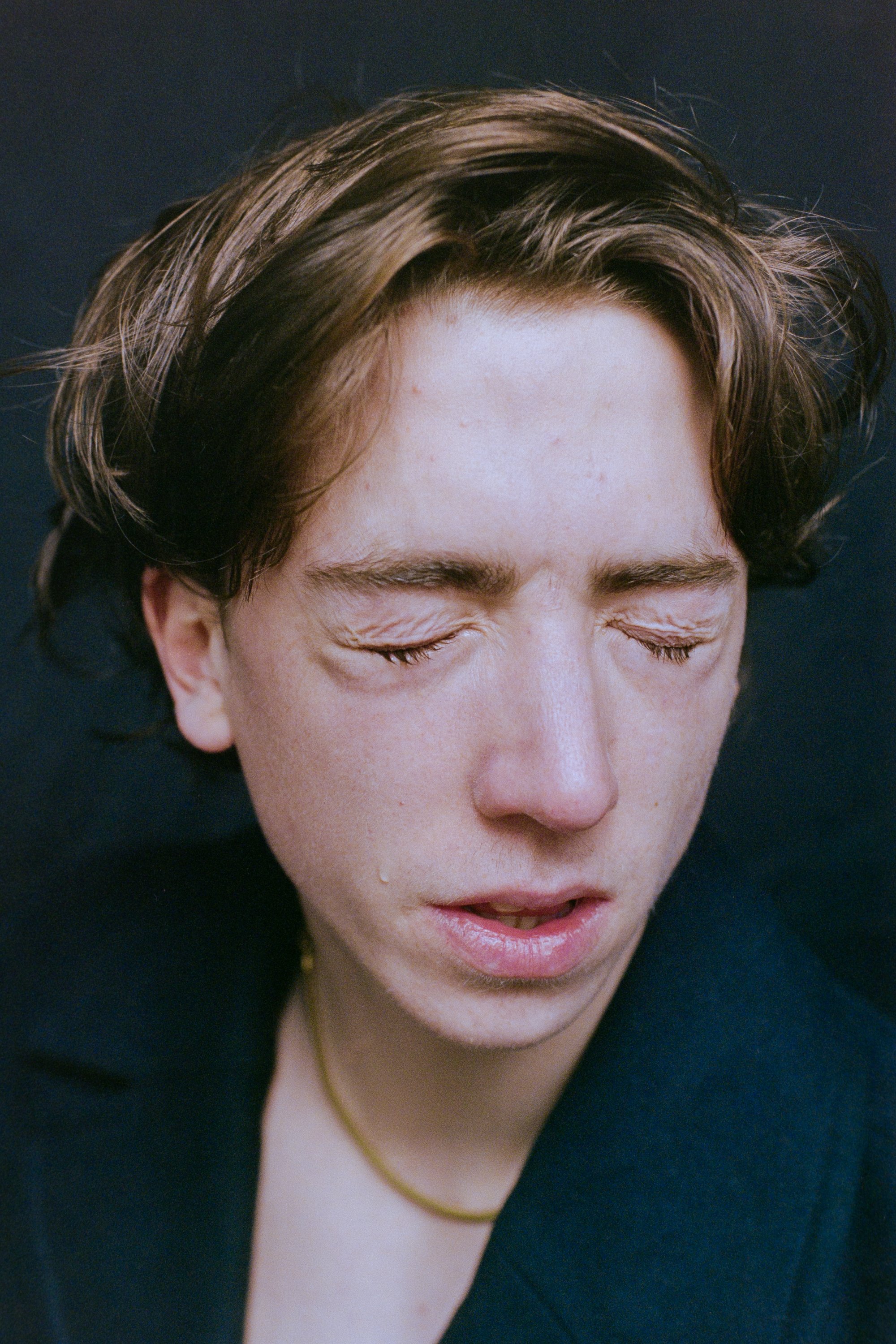Back On My Rollercoaster
Featuring Marnik A. Boekaerts Words by Nastasia Khmelnitski
Website Instagram
Marnik A. Boekaerts is a photographer and director from the Antwerp area, Belgium. In 2018, he graduated from LUCA school of arts in Brussels with a Master's in film. Marnik engages in various exhibitions in Brussels since 2013, with the latest work presented in 2018, at Beursschouwburg highlighting his Master’s project. In 2019 Marnik switched his focus to photographing editorials for online magazines and covering fashion shows in Europe.
Marnik shoots exquisite portrait photography, true to the source, capturing the state of the mind while emphasizing it with the colors and patterns of the background, as with a literary tool of pathetic fallacy. The music video, When the World’s Turned Around, shot for Halehan is a cinematic, visual and audio experience that welcomes to enter calm, dreamy nature’s spot and to dive emotionally into the narrative.
Today we speak with Marnik about his love for his hometown, Antwerp, the studies at LUCA, his perception and work on portraits, and the latest video project, Marnik directed and filmed for the local musician Halehan.
‘Antwerp feels like a large village. It’s special because it is so compact, you run into people all the time.’
Hi Marnik, how is it going? How did this day start for you?
Hi there, very good. With a croissant and a black coffee.
Could you describe your hometown? What’s special about it?
I’m originally from the countryside, hectic cities stress me. I feel happy in Antwerp because it’s a very small city. Compared to any other city, Antwerp feels like a large village. It’s special because it is so compact, you run into people all the time.
You’ve got a Master’s degree in Film, Cinema, Video studies from the LUCA school of art. How do you think one can shape his style in his career through the lectures and theories? What contributed to shaping your vision the most during this period?
I deliver when I get challenged. I think this can count for a lot of people. A school is a place that challenges you all the time by introducing you to different themes and subjects you would have never thought about. Questioning everything constantly and debating about it with teachers, mentors, and other students shaped the artistic vision I have today.
You’ve got a Master’s degree in Film, Cinema, Video studies from the LUCA school of art. How do you think one can shape his style in his career through the lectures and theories? What contributed to shaping your vision the most during this period?
I deliver when I get challenged. I think this can count for a lot of people. A school is a place that challenges you all the time by introducing you to different themes and subjects you would have never thought about. Questioning everything constantly and debating about it with teachers, mentors, and other students shaped the artistic vision I have today.
‘I stumble upon different kinds of projects, but I always seem to take the same standpoint with my camera. I can create a setting, but I don’t interfere a lot with the subject.’
What led you to decide to study at LUCA?
At the time, I felt like Brussels would be the place that would give me the most freedom. This counts for both the studies and the city.
What do you like the most about being a freelance creator?
It’s a rollercoaster. Not one week in my life looks the same.
Your photography varies from the classic portrait with a certain twist to bizarre stories to fashion to semi-documentary - always edgy with a statement. How would you describe your style?
I would describe myself as an observing photographer. I stumble upon different kinds of projects, but I always seem to take the same standpoint with my camera. I can create a setting, but I don’t interfere a lot with the subject.
‘I believe a good portrait doesn’t have to be very complicated and is created within the comfort zone of the model.’
What’s the secret in capturing a strong and fascinating portrait, like the one of Gene Bervoets or Mistral Guidotti. Is it connected to the model you work with, the angle of the camera, or the dynamics on set?
It’s important that nothing feels forced. Those portraits are made in a very intimate setting. We have a little talk with a coffee, and the vibe will quickly decide which direction the shoot will take. I believe a good portrait doesn’t have to be very complicated and is created within the comfort zone of the model.
You photographed backstage for several fashion shows. What are some of the skills one needs to work in this type of environment when everything is dynamic, but a certain quality is expected?
First, I need to observe everything and get to know what I will be photographing. It’s always a stressful environment which can often result in badly composed burst shooting. Try to find a few good spots in the room and say hi to the people you photograph.
Tell about one of your videos or video projects you directed. What is the creative process from a technical perspective when working on a video?
I recently shot a video clip with the artist Halehan. I gave myself the challenge to create a video clip entirely by myself, working only with the artist and one actress. It’s something I wanted to try out for a long time. It wasn't easy because there are a lot of elements in the making of a video clip. We took a trip to the beach for 3 weekends with only one camera and two lights. It had a very purist feel of filmmaking, which interests me a lot.
What contributes to the feeling of happiness, or what makes you happy?
Nice food, good wine, and a fridge filled with film.
What’s next?
I’ll get back on my rollercoaster.















